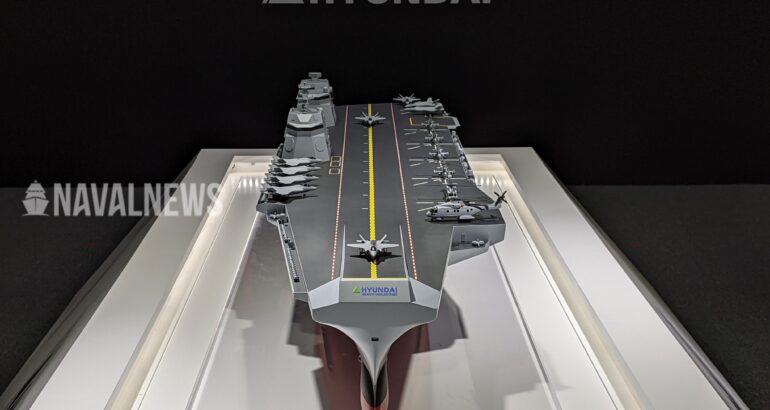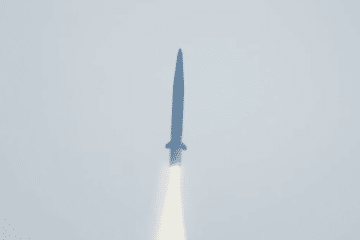According to a report by local media SBS News, South Korea’s MoD (Ministry of Defense) has formally responded to an inquiry about CVX from the Member of the National Assembly Sung-ho Jung (Democratic Party), who also serves as a member of the National Defense Committee. In the letter sent to Mr. Jung, MoD has mentioned that it will shortly begin working on preliminary policy research on the feasibility of building 50,000-tonne class aircraft carrier.
This decision from the MoD has been made after carefully reviewing the research from DAPA (Defense Acquisition Program Administration) completed in January this year. In that research, DAPA concluded that developing the naval variant of KF-21 (referred to as KF-21N) is fully achievable with sufficient budget allocation and time invested into development, which accounted for 1.8 trillion KRW (roughly $1.3B) and a long ten years respectively.

This change of plans is especially important, as MoD turning towards a medium-sized carrier than current design would involve major modifications to aircrafts that are to be operated on the ship once it has been commissioned. As it turns out, it is most likely that MoD will drop the original plan of acquiring sixteen F-35B’s but rather wait for the naval variant of KF-21 보라매 (meaning ‘Falcon’ in English), an indigenous fighter jet currently in a critical testing phase.
It is also worth mentioning that the new medium-sized aircraft carrier will be equipped either with CATOBAR (Catapult Assisted Take-Off But Arrested Recovery) or STOBAR (Short Take-Off But Arrested Recovery) system, as KF-21N would not be able to take off or land vertically. KAI (Korea Aerospace Industries) has not yet released more information about this variant of domestic fighter since DX Korea 2022 however.
As many have pointed out earlier, the total cost of CVX program will only rise as the vessel’s displacement will increase from mere 30,000 tons to more than 50,000 tons. Under last administration, the total cost of CVX program was estimated to be 2.5 trillion KRW (or 2.1 billion USD), with maintenance costing up to 50 billion KRW (45 million USD) each year, but that estimation has already been criticized in the past for being ridiculously cheap for maintaining a ship of that size.
Although the shipbuilder HHI (Hyundai Heavy Industries) and the aircraft manufacturer KAI stays rather optimistic about commissioning CVX and KF-21N by 2033 with minimal increase in total project costs, there still are many technical issues that both companies to overcome as both have no previous experiences in building aircraft carriers or carrier-borne aircrafts.
The MoD will review multiple factors in its preliminary policy research for coming months, while final decision is expected to be made by the end of fiscal year 2023 whether to upscale its future aircraft carrier to a medium-sized one or keep the design as it is now.






